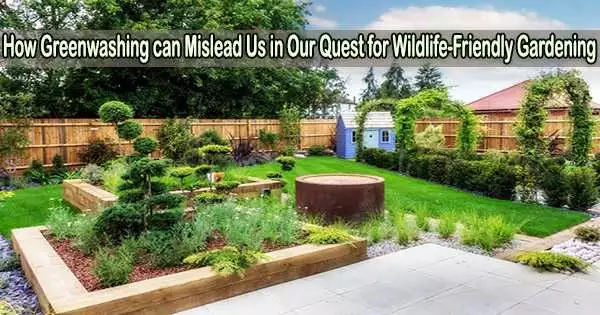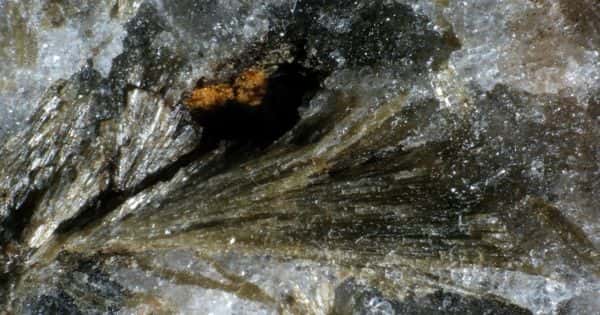People have been encouraged to find solutions to safeguard and conserve biodiversity in their neighborhoods in recent years as wildlife populations have declined. Wildlife-friendly gardening is one such effort that has gained traction. These urban gardens provide a range of ecosystems while also preserving biodiversity.
Private gardens can account for a sizable amount of greenspace in metropolitan environments. As a result, when private gardeners choose to plant specific tree species or keep mature trees, these places can assist address the needs of animals in human-dominated areas.
But many individual gardeners are falling prey to greenwashing instead of investing their limited time, energy, and money in these initiatives that produce beneficial effects. The term “greenwashing” refers to the practice of exaggerating or misrepresenting a product’s environmental advantages.
In my work as an ecologist, I (Paul Manning) have seen people spending money on products that have relatively smaller environmental benefits compared to alternative (and less costly) interventions.
Hummingbirds don’t use birdhouses
Hummingbird houses (also called hummingbird nest boxes or baskets) are small structures that are built from wood or straw. These goods have begun to appear in online retailer inventories and gardening catalogs. The idea is straightforward: Hummingbirds that make nests will occupy exterior structures, wait patiently, and eventually build nest boxes.
The ruby-throated hummingbird, a frequent garden visitor with the widest geographic range of all hummingbirds, is the target of this intervention in much of North America. Its range during the breeding season exceeds one million square kilometers.
When I was first asked about the usefulness of hummingbird houses, I delved into the literature and found no evidence to suggest that hummingbirds actually use the hummingbird houses. Hummingbird and other bird conservation organizations have been working hard to correct this misperception and re-direct gardeners.
Nests of hummingbirds are frequently found high in the deciduous trees’ canopies, making them notoriously difficult to find. Hummingbird houses can be a waste of time, effort, and money even while they are unlikely to have any detrimental effects and are unlikely to offer any value to hummingbirds.
Gardeners must, instead, maintain tree and shrub cover (so hummingbirds have a place to build their nests), and choose plants that produce lots of nectar. Build or buy a larger nest box that will be utilized by other cavity-nesting birds like the eastern bluebird, tree swallows, or chickadees if you want to create a nesting structure for birds.
Bee hotels are often occupied by wasps
Of the 3,600 species of bee found in Canada and the United States, 30 percent are classified as cavity-nesters. These bees produce pollen reserves in safe spaces, such as the hollow ends of twigs or stems, which are created by wood-boring insects.
Bee hotels are now commercially accessible, giving cavity-nesting bees a secure area to nest. Bee hotels, where a solitary bee can build her nest, are made from a range of materials such hollow tubes or pithy stems.
The idea behind this was that providing solitary bees with a selection of nesting sites would increase the populations of solitary bees (especially native species).
But research paints a more complex picture. Less than 25% of the insects using bee hotels were discovered to be native bees, according to a thorough investigation of bee hotels in Toronto. The majority of the inhabitants of the “bee hotels” were solitary wasps, which typically build their nests out of mud and feed their larvae insects and spiders.
The researchers discovered that native bees using the hotels experienced parasitoids attacks at a rate that was almost three times greater than that of invasive bee species. A parasitoid is a bug that feeds on the tissues of its host insect, in this example a bee, ultimately killing the host.
The study’s authors discovered that, at their worst, bee hotels might be used to gather bees into dense swarms where they might be more susceptible to predators, parasites, or illnesses.
Most home gardeners have trouble figuring out whether bee hotels are functioning as planned or if the bees within are native or non-native. It is essential to comprehend this before building bee hotels since the rapid rise in non-native mason bee populations has been connected to the loss in native mason bee populations, most likely due to the spread of diseases.
Choosing plants that offer lots of nectar and pollen, maintaining patches of bare soil in a sunny part of the garden (most bees live in the soil) and retaining or bringing in deadwood and old stems are all useful alternatives to bee hotels.
Nature is messy
Ecological systems are full of variation. It is more robust and healthy when there is a greater variety of plant and animal species present. The demands of local insects and birds might not be fully supported by a neat and well-kept garden.
My advice to anyone looking to make their gardens more wildlife-friendly, is to consider pushing back against obsessive tidiness syndrome. Coined by ecologist Douglas Boyes, the term “obsessive tidiness syndrome” describes humanity’s fixation on keeping things looking “just so” at the expense of leaving space for wildlife.
Designating parts of the garden as “low-tidiness” or “wild” areas can provide wildlife habitats.
Greenwashing appears in many facets of our lives. Fortunately, in the case of wildlife-friendly gardening, the answers are often shared and simple to implement: pick plants that feed wildlife (especially native plants), tolerate a little messiness and learn more about the specific needs of the wildlife you wish to shelter and conserve.
By putting these behaviors into practice and encouraging others to follow suit, we may ensure that we can coexist with the biodiversity in our immediate environment.
















